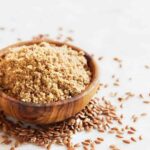What do YOU spend on groceries?
I have wondered this for years and was so interested and enlightened to learn, on a Yahoo group I belong to, what others spend on groceries in a month. Only a handful answered the question, but the answers ranged widely, from $1,000/mo. for a family of 4, to $400/mo. for a family of 7.
Unless you’re new and not a subscriber to 12 Steps to Whole Foods, you know that part of my passion for teaching families to eat a health-promoting, plant-based diet, is helping them do so INEXPENSIVELY, within a budget, since the moms who are teaching the kids are usually in the stage of life where money is a scarce resource and must be accounted for carefully.
Maybe it’s a taboo subject, but if so, I’ll try to pave the way with some self-disclosure: my family of 6 spends $800/mo. on groceries, on average (less in the summer, more in the winter). It’s also important to note that all of my kids are athletes and big eaters, two of them teenagers. (Shouldn’t a teenager count as 2 people?!)
We save by gardening, participating in a CSA, buying in bulk and stocking up, and preparing meals from scratch. We preserve and freeze food in our basement cold storage, second fridge, and upright freezer. As you probably are now aware, we eat whole foods and don’t buy meat, dairy, or boxed/canned processed foods. All of the budget is whole plant foods except for the occasional church social, extended-family, or after-soccer-game food assignment. We grow organic, but we don’t always buy organic. We splurge by going to Sweet Tomatoes once a week, and I’m actually not counting that in the budget.
Please write here what you spend, and give any tips on how you save and how you splurge within that budget (and what percentage of your grocery budget is whole foods). I think women (or the money manager in the home) will find this fascinating and helpful. I know I will.
Posted in: 12 Steps To Whole Food, Relationships













